When you visit Florence, the Tuscan capital with the well-deserved nickname of “Birthplace of the Renaissance,” you’ll see Leonardo da Vinci’s work throughout the city.
He’s one of those big Renaissance art names, alongside Michelangelo and Raphael, so it’s no surprise that Florence has a healthy list of da Vinci sights. But…Leonardo da Vinci in Milan is another story.
As one of the Renaissance’s most brilliant minds, Leonardo left an indelible mark on Milan during his years of work under the patronage of Ludovico Sforza. From his iconic Last Supper to intricate engineering sketches and visionary inventions, his influence continues to shape the city’s artistic and cultural landscape. This guide to exploring Leonardo da Vinci in Milan invites you to follow in Leonardo’s footsteps, uncovering the best places to explore his masterpieces, visit world-class museums, and experience the rich legacy he left behind. Whether you’re an art lover, history enthusiast, or curious traveler, Milan offers an unforgettable journey into the life and genius of da Vinci.
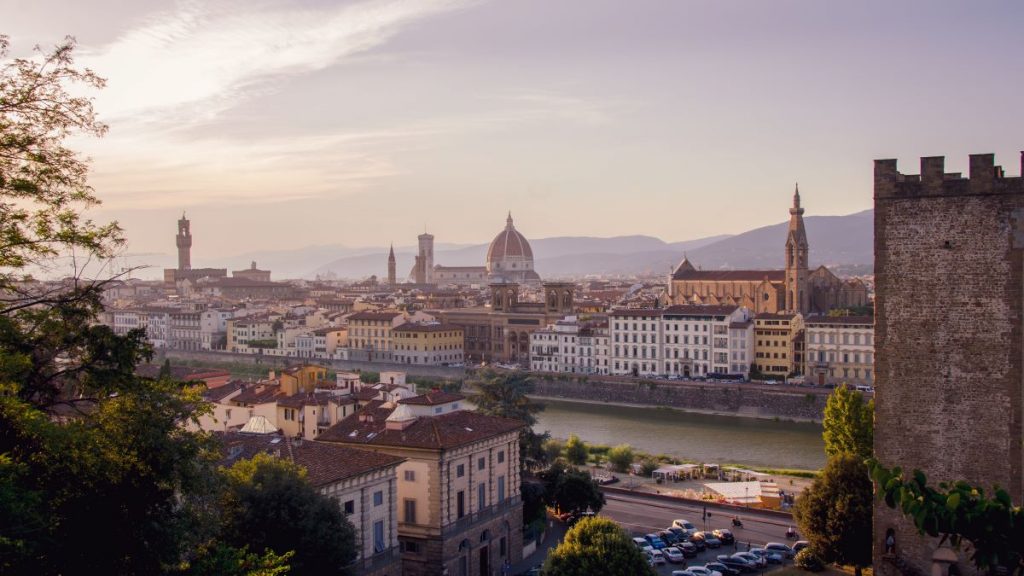
Leonardo da Vinci’s life in Milan
Milan is a city that doesn’t always get the attention it deserves from tourists. It’s the national finance capital, more frequently a destination for business travelers than vacationers. This is a city that may not look like what you’d expect from a Renaissance hub, but looks can be deceiving—Leonardo’s handiwork, it turns out, is all over Milan.
Leonardo, born in the Tuscan town of Vinci, first landed in Milan in the early 1480s after roughly a decade rising to artistic prominence in Florence. He had two stints living in the Lombardy capital for a total of about 22 years, during which he created some of his most famous works of art. Some of these landed outside Milan, including the beautiful Virgin of the Rocks painting hanging in the Louvre and the Vitruvian Man sketch in Venice. Many others, however, remain in Milan, sometimes in the very same place where Leonardo made them.
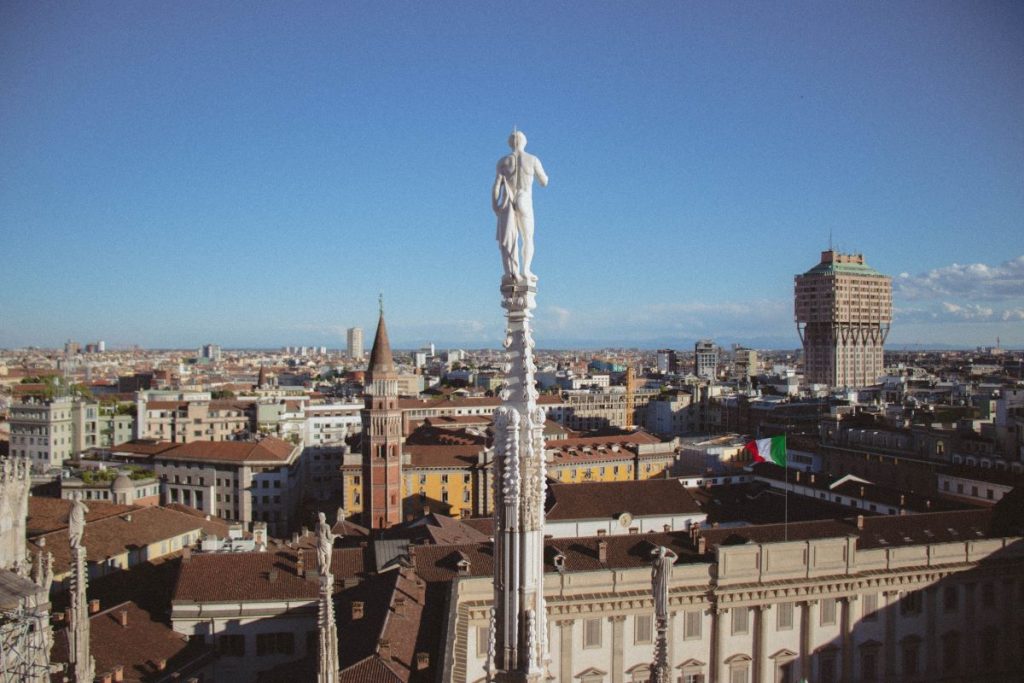
Here are the main attractions that remain of Leonardo’s time in Milan, some of which are absolutely reason enough to visit the city.
The Last Supper
Of course, there are quite a few places where you can see Leonardo da Vinci paintings in Milan, including at the Milan Leonardo da Vinci Museum . Yet, we all know which one brings art lovers from all over the world.
The Last Supper is one of Leonardo’s most famous paintings—and also his most famous failure.
Il Cenacolo, as it’s called in Italian, was a fresco (mural painting) commissioned in 1495 by Ludovico Sforza (Duke of Milan) for the Santa Maria delle Grazie monastery. It wound up being an experiment on da Vinci’s part. Instead of painting on wet plaster—the traditional method of fresco painting—he painted on a poorly insulated stone wall of the monastery’s dining hall, attempting to seal the completed painting when he finished.
It didn’t work.
The fresco was completed in 1498 and was already flaking by 1517. In fact, by 1652, the painting was so damaged that the monastery thought nothing of punching a hole in the bottom of the wall for a doorway.
Traveler’s tip: Getting tickets to the Last Supper can be a little complicated. To take the stress out of the process, sign up for our Best of Milan Tour, which includes skip-the-line tickets to the Last Supper Tickets, Duomo, and various Milan landmarks.
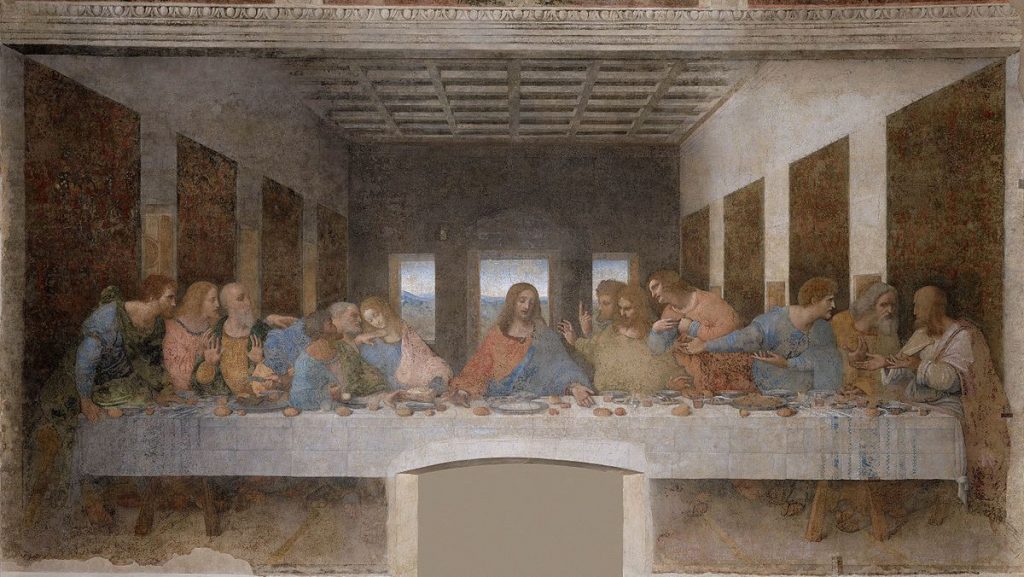
Through decades of painstaking restoration of the Last Supper and preservation efforts, including extremely strict rules for visitors, we can still see evidence of the gorgeous fresco—though we can only imagine how magnificent it must have looked when he first painted it.
In Milan, Leonardo da Vinci is typically the first thing visitors flock to. But visiting this famous painting takes some planning. Note that visits to Santa Maria delle Grazie’s refectory to see The Last Supper are timed (you get 15 minutes), with only a few people allowed into the room at a time, photography or video of any kind is prohibited, and multiple climate control doorways between the fresco and the outside world. Tickets often sell out months in advance. If you aren’t able to book a ticket on your own, a Milan tour that includes entry to see The Last Supper is probably your best bet.
A tour which offers skip-the-line, reserved entry to this well-known masterpiece (plus, all of the details you need to understand and appreciate this piece, shared by expert guides) is our Best of Milan Tour.
Sforza Castle: Sala delle Asse
There are only two known frescoes by Leonardo da Vinci in the world, and they’re both in Milan—The Last Supper, detailed above, and a fresco inside the Sforza Castle’s Sala delle Asse, both commissioned by Ludovico Sforza.
The Sala delle Asse, or “Room of the Wooden Planks,” was getting its da Vinci makeover at the same time Santa Maria delle Grazie was getting theirs—and, unfortunately, he used the same experimental fresco-painting method in both places. The room’s decorations were finished in 1498, but the French army invaded Milan the following year and took over the Sforza family’s castle for their own purposes. In the process, Leonardo’s fresco suffered an indignity before it even had a chance to start flaking. Sadly, the French army painted over it.
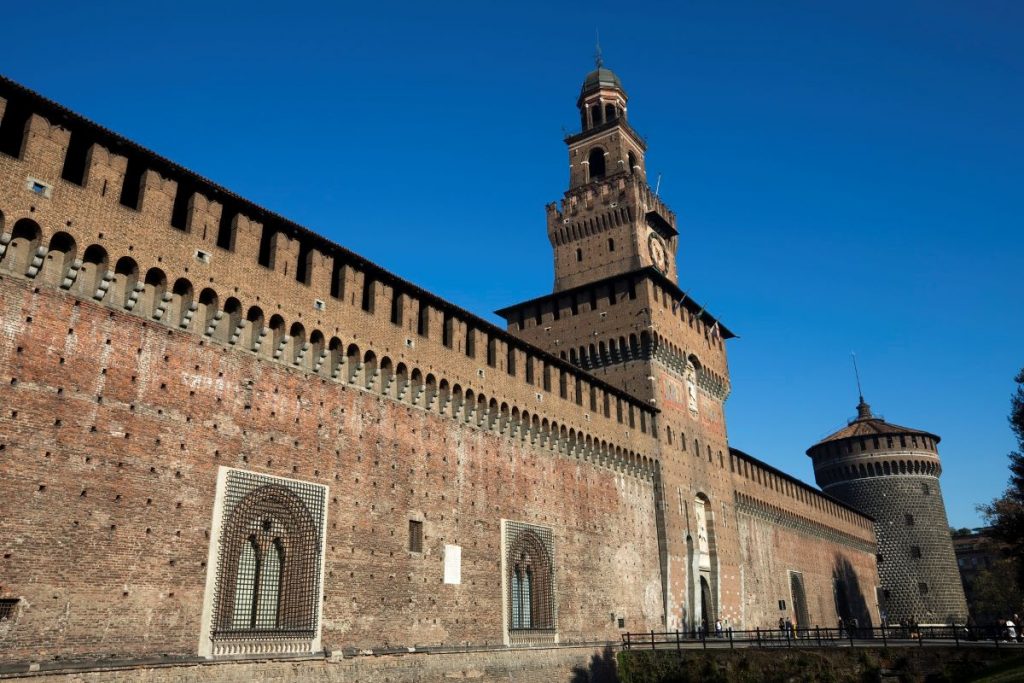
It wasn’t until the mid-19th century that restoration work began (on what was, by that point, largely a castle ruin) and workers found da Vinci’s wall and ceiling frescoes beneath the layer of white paint. And, in some ways, the white paint preserved the frescoes—colors were much brighter than those of The Last Supper. The Sala delle Asse fresco is a trompe l’oeil scene of mulberry trees growing around a pergola, from their leafy canopies to their roots, as if one was lying in a garden.
Insider’s tip: The latest round of restoration work has been ongoing for more than a decade now, and the room is frequently closed to visitors while work continues.
Biblioteca and Pinacoteca Ambrosiana
While some of the art Leonardo made while in Milan is no longer in Milan (or in Italy, for that matter), a few pieces can still be found in the city at the Ambrosiana Library and Art Gallery.
You can also visit two Leonardo da Vinci Museums in Milan.
- Museo Nazionale Scienza e Tecnologia Leonardo da Vinci, which houses hundreds of working models reconstructed from Leonardo’s drawings: flying machines, hydraulic saws, cranes, diving suits.
- Leonardo3 – The World of Leonardo da Vinci, which offers an ommersive, interactive Leonardo‑centric experience.
Da Vinci at the Pinacoteca
Leonardo da Vinci is known to have created fewer than 20 surviving paintings, which are located in various cities around the world. But, there is one Leonardo da Vinci painting in Milan.
The Pinacoteca has the only da Vinci panel painting still in Milan, an unfinished work on walnut known as Portrait of a Musician. It dates from about 1485, during Leonardo’s first stay in Milan, and was originally speculated to be a portrait of the artist’s Milanese patron, Ludovico Sforza. In the early 20th century, when the subject’s hand was revealed during restoration work—a hand holding a piece of written music—the painting got its current title.
Da Vinci at the Biblioteca Ambrosiana
Even in his lifetime, Leonardo was known as more than “only” an artist, and many of his sketches and notes about engineering, mathematics, architecture, and astronomy (as well as preliminary sketches for his artworks) were collected after his death in 12 leather-bound volumes of what came to be known as the Codex Atlanticus. It’s perhaps only a quarter of the notes he left behind when he died, but the Codex is the largest collection of da Vinci’s drawings anywhere—and it’s in the Biblioteca Ambrosiana.
The massive size of the Codex means that it can’t all be on display at once (there are more than 1,000 double-sided pages). Instead, they keep a rotating selection of the pages on display in the Library. There’s also a beautiful interactive site for exploring all 1,119 pages of the Codex in detail without even leaving home.
Navigli Canals
Venice is Italy’s famous canal city, but Milan has canals, too—and some say they were designed by Leonardo. The Navigli Canal system dates back to the 12th century, but during his first stay in Milan, da Vinci is said to have put his engineering expertise to use in renovating the canals. And even if that’s more fantasy than reality, one of da Vinci’s engineering inventions is not only still in use in Milan’s canals, but in canals all over the world, too: the canal miter lock, the original sketch for which is in the Codex Atlanticus.
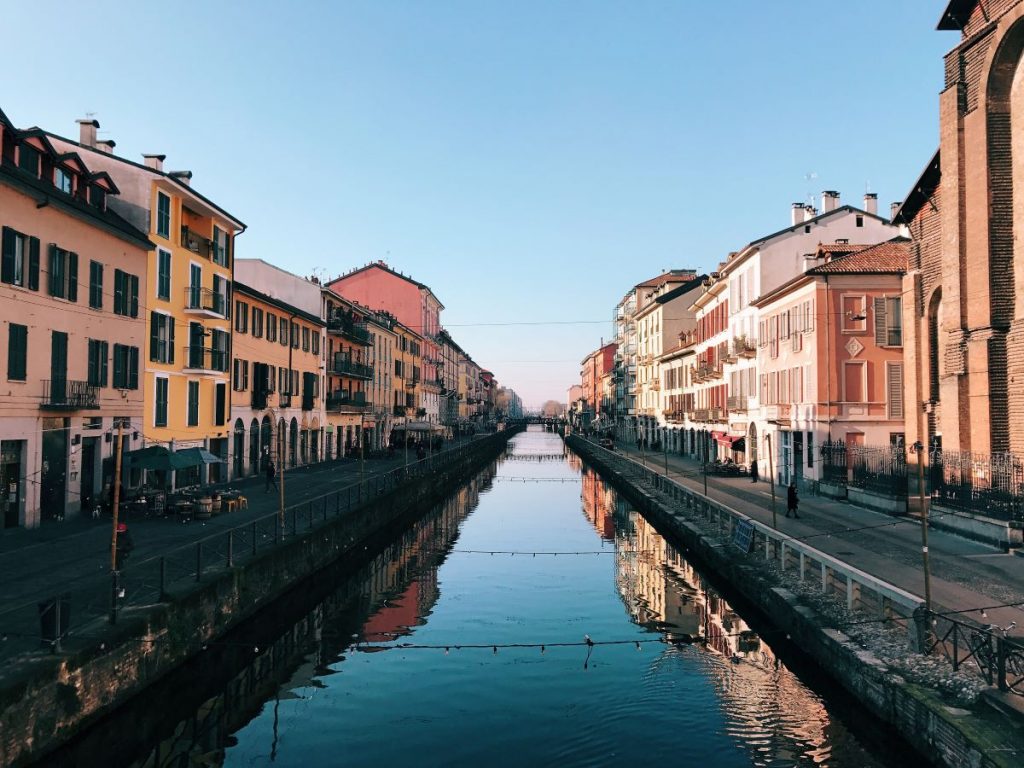
Da Vinci Museum of Science and Technology
There are a number of Da Vinci Museums in Milan, including the Leonardo da Vinci National Museum of Science and Technology (Museo Nazionale Scienza e Tecnologia Leonardo da Vinci) in Milan. What’s especially interesting about modern da Vinci museums like this one is not the reproductions of his engineering drawings on display—it’s the models built from those drawings.

The Leonardo da Vinci Museum was opened in 1953 in a former monastery dating from the early 1500s, which means there are some unique areas in the museum (such as the old cloisters). This is Italy’s premier science and technology museum, not strictly limited to da Vinci, but the Leonardo section of the museum is where you’ll find roughly 170 models that have been built using his original designs.
It’s the largest collection of da Vinci models in the world, including flying machines, a parachute, an odometer for wheelbarrows, distillation stills, yarn spinning and weaving machines, an underwater diving suit, excavation tools, a printing press, a tank, dozens of cannons and other military weapons.
Da Vinci Vineyard
One more surprising place to get close to Leonardo da Vinci in Milan is while sipping a bit of Da Vinci wine. Wait, what?
When Leonardo had completed his work on The Last Supper and the Sala delle Asse in 1498, Ludovico Sforza (his patron and the Duke of Milan) gifted to the artist a vineyard behind Casa degli Atellani, the house where he had been staying. Da Vinci left Milan the following year, the same year the French invaded the city. They confiscated the house and vineyard in 1502, though when da Vinci returned in 1508 he managed to re-establish ownership of the vineyard.
In 1513, Leonardo left Milan, never to return. The vineyard gradually passed through different hands and was largely neglected, then severely damaged by Allied bombings in World War II. In the years leading up to Milan hosting Expo 2015, however, a team set out to not only recreate the look of the master’s former vineyard—they also wanted to cultivate the grapes that would likely have grown there when he lived in Milan.
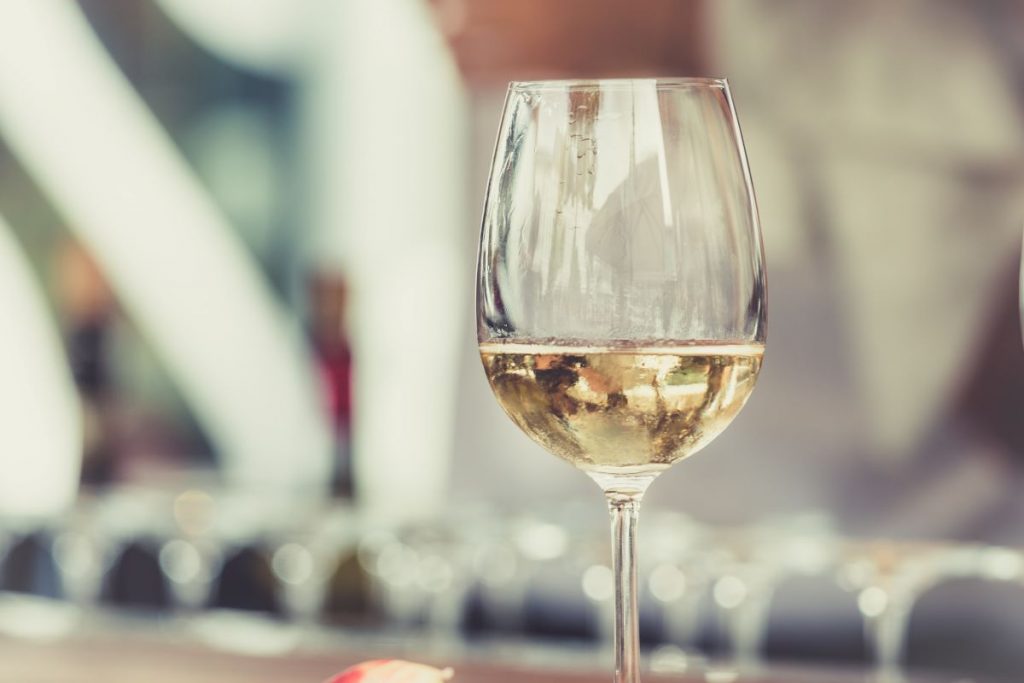
Using genetic grapevine material excavated from the vineyard and garden, they were able to identify and then plant the same white wine varietal that grew there in Leonardo’s lifetime: Malvasia di Candia Aromatica. The first harvest was in 2018, and the first bottles sold in 2021.
Today, the Casa degli Atellani and Leonardo’s Vineyard (La Vigna di Leonardo) are both open to visitors. Part of the house (just across from the church where The Last Supper is) has even been transformed into luxury vacation apartments, and there’s also a cafe where you can order a glass of Leonardo’s wine to sip with lunch.
Leonardo da Vinci in Milan FAQ
Where can I see Leonardo da Vinci’s paintings in Milan?
The most famous Leonardo da Vinci painting in Milan is The Last Supper, located at Santa Maria delle Grazie. You can also explore interactive exhibits and models at the Leonardo da Vinci Museum Milan, which showcases his inventions and artistic achievements.
What is the Leonardo da Vinci Museum in Milan?
The Leonardo da Vinci Museum Milan—formally known as the Museo Nazionale Scienza e Tecnologia Leonardo da Vinci—is Italy’s largest science and technology museum. It features dedicated galleries to Da Vinci’s inventions, models, and manuscripts, making it a must-visit for fans of his genius.
How do I book tickets for The Last Supper in Milan?
Tickets for The Last Supper must be booked in advance due to high demand and limited entry slots. It’s recommended to reserve online through the official site or join a guided tour for guaranteed access.
What are the best Da Vinci-related sites to visit in Milan?
Top sites include the Leonardo da Vinci Museum Milan, Santa Maria delle Grazie (The Last Supper), the Ambrosiana Library (home to Da Vinci’s manuscripts), and the Sforza Castle (Castello Sforzesco), where you’ll find fascinating sketches and models.
Is there a tour that covers all major Leonardo da Vinci locations in Milan?
Yes! Several guided tours—like our exclusive “Leonardo da Vinci’s Milan Tour”—cover all the highlights, including museum visits and special access to The Last Supper.
To see the best sites of Leonardo da Vinci in Milan takes some planning. And getting tickets to The Last Supper can be quite stressful. The best way to not only see the sites, but get special insight from an expert guide is to sign up for our Best of Milan Tour, which includes skip-the-line tickets to the Last Supper Tickets, Duomo, and various Milan landmarks.
